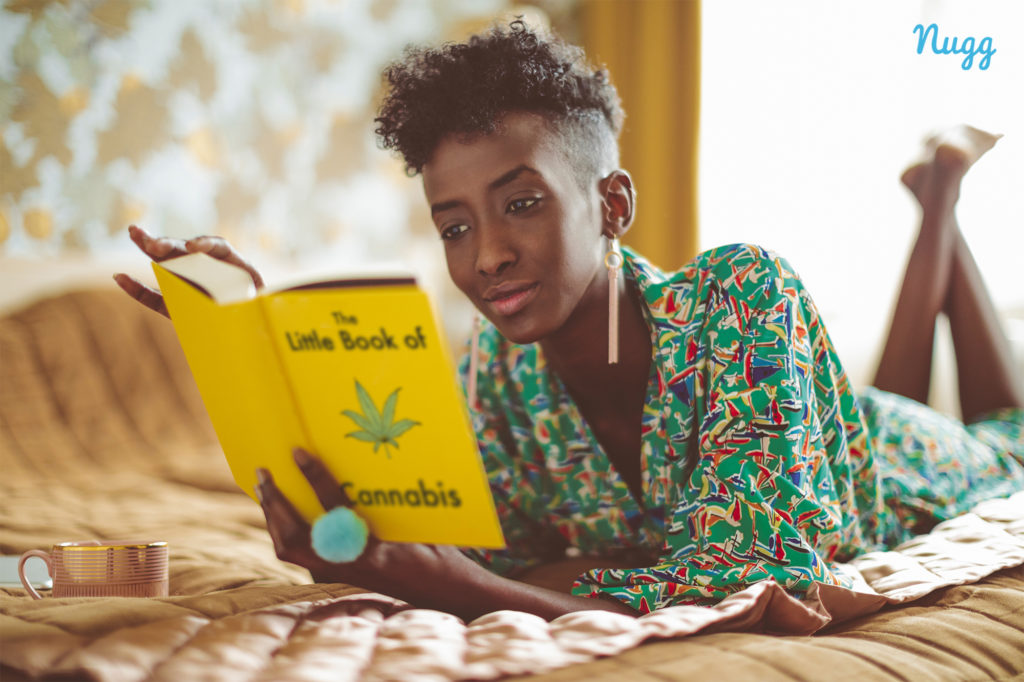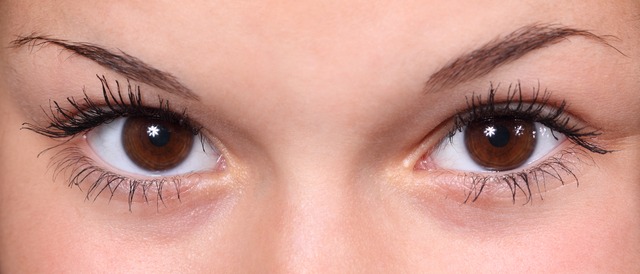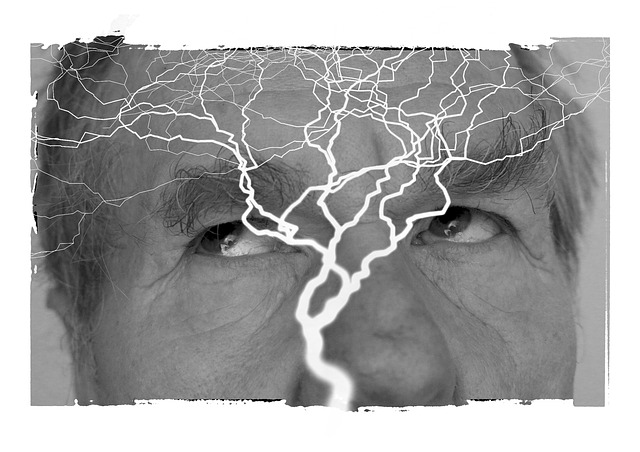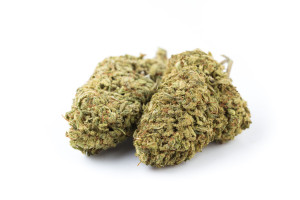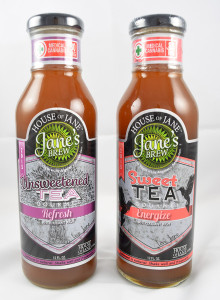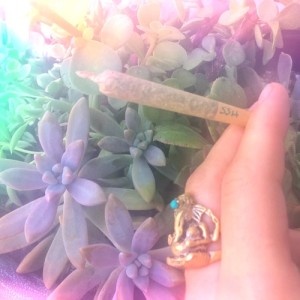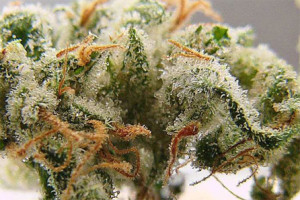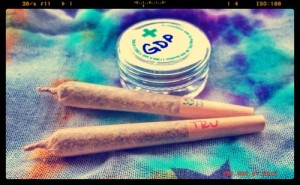Dos & Don’ts of Cannabis Storage: How to Keep Your Products Fresh
Leave a Comment
It’s Friday so you purchase some quality flower to help relax. But you unwind too much and leave the jar open over the weekend, only to find stale, flavorless flower come Monday. Maybe you store a top-shelf cartridge in your pocket, forget it’s there, and break it when you sit. Or you leave a piece of chocolate in its foil wrapper where it melts from sun exposure.
While stale bud, leaky cartridges and melted chocolate aren’t the end of the world, it’s really annoying to waste your hard-earned money at your local dispensary or on cannabis delivery. You want the most out of your investment.
You may not realize this, but proper cannabis storage can keep your products fresh, potent and tasty. They, like fresh produce, are also susceptible to degradation. Taking a couple of simple precautionary steps will ensure your edibles, flower, pre-rolls, concentrates, vape carts, tinctures and topicals stay fresh and effective ‘til the end!
Here we’ll give you some tips on how to get the most out of all your cannabis products. In the end, it’s better for your bank account and body.
What you'll learn in this post:
[Click any of the section titles below to jump there]
What Happens to Cannabis When Improperly Stored
Natural forces can really do a number on cannabis quickly. Beyond the physical alterations, factors like heat, air, and UV rays can actually lead to cellular changes that modify potency and effects.
Cannabinoids, the vast chemical compounds found in cannabis like THC and CBD, can synthesize into other forms. Many cannabinoids are stored as acids, which aren’t “bioavailable” without heat. Cannabinoids like CBC (Cannabichromere) and CBG (Cannabigerol), which we don’t know much about, are synthesized from their acidic versions (CBCA and CBGA) when they come into contact with heat.
One of the most consequential examples of cannabinoid synthesization is THC, the cannabinoid that makes us feel high. THC becomes bioavailable when THCA, a non-psychoactive cannabinoid, is exposed to heat. But that’s not the final act. When exposed to light and air, cannabis is synthesized into CBN, a cannabinoid known for making you very sleepy.
Synthesizing THC to CBN isn’t necessarily a bad thing; some may even benefit from CBN. If you deal with sleep disorders or pain due to inflammation, CBN’s sedating and anti-inflammatory properties could do the trick. Just be aware that, typically, the higher the CBN level, the lower the THC and psychoactive effects.
Yet if you buy cannabis with a certain THC level and want to keep it that way, storing the product properly will help preserve its potency, texture, flavors and effects. Generally, the most important natural forces to consider are light, temperature, air, and moisture. Improper levels of any of these can lead to changes in taste, potency, safety and, as mentioned, even cannabinoids.
Light
Failing to stash a strain properly can alter its effects and potency. UV rays, specifically UVA and UVB, are undoubtedly powerful. UVB can break down THC, which can lead to a drop in potency. Protecting your flower from this demise is as simple as buying a couple of UV-protected jars and storing them in a dark, cool place when not in use.
Temperature
Cannabis should be stored somewhere relatively cool (60°-70°F) and dry. Heat and moisture can produce mold, which can be very dangerous to inhale.
But it can’t be too cold! Cannabis, especially flower, should never be placed in the fridge or freezer. These frigid temperatures will cause the trichomes, those little hairs that make buds look frosty, to separate. Losing trichomes means losing important cannabinoids and flavors.
Air
In general, cured and processed cannabis should be exposed to as little oxygen as possible. Too much O2 can cause rapid cannabinoid deterioration. As we mentioned, oxygen is responsible for synthesizing THC to CBN. Oxidation will produce a less potent “high” than cannabis products kept in airtight containers. Those UV protective jars above are great because they have an airtight seal and block harmful rays.
Moisture
Too little humidity can lead to crunchy, unappealing cannabis that lacks flavor and potency. Sounds gross, right? On the other hand, too much dampness and lack of airflow can create a breeding ground for mold and bacteria.
And as if that isn’t enough, too much humidity and stale air can really ruin the flavor of cannabis by introducing too much ammonia to the chemical equation. Neither is great, though there are easy ways to regulate moisture in your cannabis jars, pre-rolls, and edibles so you have no excuse! Simply buy freshness packets to store in the jar/pack/pouch to help regulate moisture, avoid mold and flavor degradation.
Proper Cannabis Storage by Product Type
Edibles
Nowadays, we have cannabis-infused versions of just about everything: cold brew coffee, truffles, dried fruit, potato chips, granola–the combinations are virtually endless. Because of this, each edible type comes with its own shelf life and storage needs. On top of that, many come with more than one dose, so proper cannabis storage is necessary if you want to maintain freshness until the next dose.
The number one rule when it comes to edibles: pay attention to the packaging. With such variety their needs vary, so check for shelf life info like sell-by/expiration dates, refrigeration instructions and how long a product will last after opening. If you can’t find any of these details, ask your budtender or contact the brand for advice.
If you don’t spread infused butter or olive oil on your daily toast, stow in the freezer instead of the frig. Just be sure to use the rest in six months or risk it going rotten.
Refrigerate drinks, candy bars and baked sweets unless consumed in one sitting. Don’t like them ice-cold? Let chocolates, cookies, cakes and krispy treats sit out for five minutes to reach room temperature or risk cold, hurt teeth. Unlike baked goods, most chocolate bars don’t come in resealable packaging, so also put them in an airtight sandwich bag to prolong shelf life.
More popular infused snacks like chips and popcorn already come in resealable bags; those that don’t, place in an appropriately sized ziplock bag. Regardless of the packaging, keep them anywhere it’s not very hot or cold since they don’t require refrigeration.
As for gummies, most are also already packaged in reclosable bags or child-proof plastic bottles. Refrigeration won’t do any harm, though you’ll do more chewing, so put them in a cool, shady place like a drawer or cabinet.
Flower & Pre-Rolls
We can’t overstate the difference proper storage can make on cannabis flower and pre-rolls. Flower easily deteriorates when exposed to oxygen, humidity and UV rays that can lead to lackluster flavor and effectiveness.
If you left a fresh nug or joint out on the counter, it wouldn’t be worth consuming within two weeks. But with the proper cannabis storage techniques, flower and pre-rolls can last up to six months or longer! That’s a huge difference in shelf life for very little effort.
First, let’s discuss the best containers for storing cannabis flower. Here’s a little-known fact: the static electricity in plastic bags can actually make marijuana less potent by attracting the trichomes away from the buds and to the walls of the plastic bag. These trichomes are full of cannabinoids and terpenes, both essential to the potency and flavor. If plastic bags are part of your current storage technique, now’s the time to invest in some UV-blocking glass jars.
Now let’s talk temperature. Proper conditions will ensure your cannabis doesn’t dry out or grow yucky organisms like mold and bacteria. These gross critters thrive above 77°F, so always stash your bud in a cooler environment and away from direct sunlight, preferably 60°F to 75°F. This can be as simple as keeping a jar or pre-roll pack/tube in a desk drawer in a shaded part of your home. And if you want to be extra cautious about moisture levels (and you should), invest in some freshness packs to extend their shelf life.
But, whatever you do, don’t store your cannabis flower or joints in the fridge or freezer. While a very short stay in either isn’t necessarily bad, storing flower in very low temperatures for an extended time can cause the trichomes to fall right off.
Concentrates
Concentrates have taken the cannabis world by storm. Similar to edibles, there’s a huge variety available made using different extraction processes, resulting in distinct textures and effects like sugar, shatter, budder, resin, and crumble.
Unlike flower, these concentrates offer more potent effects, a cleaner high, and arguably more complex taste. However, improper storage can be detrimental to these positive characteristics.
Concentrates are one of the easier products to preserve, lasting three to six months or longer when properly stored. Concentrates like sauce, butter, and crumble typically come in thick glass jars while others like shatter are packaged in small plastic cases (like SD cards) or paper envelopes with the product wrapped in parchment paper. Regardless of their packaging, don’t leave them exposed to the air when not in use.
If you want short-term storage and transportation, purchase an airtight silicone container to keep your preferred concentrate(s) free of debris, deterioration, and harmful UV rays.
Vape Cartridges
Proper storage is a matter of function as well as preservation. Vape carts should also be placed in a cool, dark locale to preserve potency and flavor. Beyond that, tossing one around haphazardly or storing it horizontally (unless in the manufacturer’s case) can lead to annoying mishaps like leaking and clogging.
Unfortunately, most cartridges are made from plastic and thus relatively easy to break; the components are so small it isn’t hard to get a clog. And when you pay $50-$60 for a top-shelf one, being careless with care can really hurt your wallet.
Keep in mind that pyrex and metal cartridges are less likely to break since the material’s stronger. Whenever your battery pen isn’t in use, unscrew the cartridge to avoid any unnecessary heat. Then store it upright with the mouthpiece facing up; keeping the oil down by the wick won’t cause clogging near the mouthpiece. Plus, you won’t have to wait for the oil to flow back down towards the heating element. Want portability? Invest in a vaporizer that comes with a padded carrying case.
Here’s an extra tip for clogged cartridges (they’re more common than you think): many top-shelf brands use more natural ingredients like honey in their concentrates. This can cause the oil’s viscosity to fluctuate, sometimes resulting in jamming. But before you give up on a vape oil cartridge try thinning the oil with a little heat using these two methods. Take small, rapid puffs while plugged into the battery to get the heating element fired up or simply roll the cartridge between your hands quickly to create friction. Now you’re heatin’ up!
Tinctures
If this was a competition, tinctures and topicals would be tied for easiest cannabis storage. Generally, tinctures are a supremely underrated form of consumption. Not only are they a very discrete non-smoking option that can be added to nearly any food or drink, they have a two or three-year shelf life if stored right!
That might sound crazy, but tinctures are incredibly stable due to the alcohol extraction method most commonly used to make them. So, as you might guess, tincture storage is pretty simple. Whether it’s olive oil, vegetable glycerin or something else, it’ll preserve easily. All you need is one of those UV-protected bottles or jars kept in a cool, dark place. And as if that isn’t easy enough, virtually all tinctures already come in UV-protected packaging.
Topicals
Storing topicals is pretty much a no-brainer. These can easily have a shelf life of one to two years if stowed properly — since storing topicals is so easy, you shouldn’t have any problems.
Whether an oil, lotion, salve, spray, balm, or cream, they’re all made to be stored in a bathroom or medicine cabinet like the rest of your ointments and other medications. That means the materials used to emulsify and mix into topicals are, for the most part, completely shelf stable. And just like tinctures, virtually all topicals come in UV-protected and airtight packaging.
Still, the normal rules of cannabis storage still apply. Keep your topicals in a cool, dark place; don’t let them sit in the car during a hot summer day or in the freezer when the AC is on the fritz. Generally speaking, a bathroom or bedside drawer are great spots to store.
Recommended Cannabis Products with Storage in Mind
Sadly, when it comes to packaging, not all brands are created equal. Some may look very visually pleasing, but just doesn’t offer the level of protection needed to keep what’s inside fresh. Here are some concentrates, carts, flower, pre-rolls, and edibles that are just as potent as they are protected.
Concentrates
Look for concentrates that come in small and sealable glass jars or syringes rather than just parchment paper and a Ziplock bag. Both Heavy Hitters and Alpine Vapor make some pretty cool small syringes filled cannabis distillate and oil, respectively. These can be easily be stored upright and will limit the concentrate’s exposure to unnecessary air.
Vape Cartridges
Invest in one that comes with a nice, padded carrying case like this one from AbsoluteXtracts. For a disposable vape option, try a dosist pen. While these pens are made of recycled plastic, they’re incredibly well made and aren’t likely to leak or break. Why? The entire cartridge, except a small window to gauge the level of oil, is encased in a strong plastic shell.
Flower & Pre-Rolls
When it comes to flower and pre-rolls, invest in brands that package their products safely and correctly to maximize shelf life. Flow Kana packages their flower in UV-protected, amber glass jars. Ganja Gold houses their individual flower/wax/kief tarantula pre-rolls in sturdy, airtight plastic doob tubes. THC Design shrink wraps their Classic J’s tins containing six joints, each with its own molded placeholder, covered by a Boveda humidity pack and thin paper sheet.
Edibles
Most infused foods, unfortunately, aren’t made with storage in mind, especially those that come with multiple doses like a chocolate bar or baked good. If you’re like me and often find yourself with more, there are a few options.
One option: buy edibles with resealable packaging. Korova stores all of their bars and cookies in tricky-to-open, UV-protected, resealable plastic pouches. If dividing one is too much trouble or sweets aren’t for you, try Milo Confections single serving mints. They provide the exact dose you want and fit in your pocket or purse. Just pop one or two out of the tin whenever you need relief!
Do yourself a favor and stash your cannabis where it’ll keep fresh! It’ll last longer, keep its flavor and potency, and remain free of mold and other harmful bacteria. When it really comes down to it, cannabis storage is as simple as keeping a UV-protected jar or ziplock bag in a cool, dark drawer. Sounds easy enough, right?
If you’re curious about the best way to store your favorite or new product, consult Nugg’s cannabis concierge service. Our team of experts can give you the most up-to-date info on how to seal your stash, maximizing flavor and potency for weeks to come.
CBD: The Good, the Bad, the Astonishing
5 Comments
Ever wondered if CBD is an effective medical remedy or just another snake oil? Everywhere we look we see CBD in products like vape pens, fancy waters and maple pepper chewy puppy treats. So what’s the point of taking cannabis if it won’t make you high?
Our full-service Cannabis Concierges field this question a lot, though the answer might be more surprising than you think.
What you'll learn in this article:
[Click any of the section titles below to jump there]
What Is CBD?
If you’re just joining the class, let’s review the basics. CBD, AKA cannabidiol, is considered one of the core 483 compounds contained in the cannabis plant. While it doesn’t make you high alone, it does induce a mild state of well being. Some other cannabinoids you might know are:
- THC (Tetrahydrocannabinol)
- THCA (Tetrahydrocannabinolic Acid)
- THCV (Tetrahydrocannabinol)
- CBC (Cannabichromene)
- CBN (Cannabinol)
- CBG (Cannabigerol)
- CBDV (Cannabidivarin)
Each of these distinct compounds is known for producing their own set of benefits and effects. However, cannabis is more than the sum of its separate components.
Isolates Vs. Whole Plant CBD
The cannabis compounds above are called isolates, substances that have been separated from their combined mixtures. Each isolate will have its own chemical properties and effects that are separate from the mixture they were derived from.
It’s difficult to overemphasize an important fact: these compounds can have completely different effects as isolates than they do when combined with each other.
THC alone has been proven to cause panic, anxiety and tachycardia (rapid heart rate) in some users. While this reaction isn’t fatal, it certainly interferes with the more pleasant side-effects of a high. The good news is that CBD can mitigate these negative effects.
This isn’t something to take lightly considering the plant’s medical applications. And there are more examples where this came from.
CBD More Beneficial Than THC?
Not at all. There’s an ongoing and incomprehensible myth that CBD is the good cannabinoid while THC is the bad one. Why? Probably because THC makes you high and CBD doesn’t. There’s a basic assumption behind this reasoning: things that make you feel good are bad for you. This couldn’t be more wrong.
Eating chocolate feels good; it has antioxidants, minerals and other nutrients that the body requires to maintain a healthy diet. Actually, eating anything tasty feels good. Why? The body creates reward pathways for survival so we’re more likely to do (and eat) things that are good for us.
The problem occurs when the triggering substance gets replaced with something harmful that carries the same feel-good effect. If naturally nutritious food gets replaced by processed junk, you’ll get sick—even if it feels good.
Pleasure Isn’t the Problem
Take dopamine, the chemical released with “runners’ high,” laughing, and even sex—basically anything that’s awesome. Cocaine also releases dopamine; but while the previously listed activities that lead to its release are usually healthy, cocaine is not. What’s wrong here? We’ve replaced naturally healthy methods of dopamine release with a caustic chemical that causes irritation, bleeding, and tissue damage.
The problem isn’t the reward pathway—it’s the thing that causes a reward. If it’s bad for our health, it’s a problem; if it’s good, it’s a solution. So far, THC shows promise to unlock many health benefits. Is the fact that it makes us feel good a bad thing? Of course not!
Mother Nature Knows Best
There’s another misconception that any cannabinoid works just as well without the others. This isn’t just assumed for CBD. You’ll also find potent MMJ products that have very little CBD and up to 25% THC. This isn’t necessarily the natural form of the plant that we’re evolutionarily designed to absorb.
We actually have specific receptors designed to receive cannabinoids. We create our own endocannabinoids in our cells, which bind to these same receptors. Cannabinoids are the actual substances designed for that reward pathway. Many believe the best cannabinoid combinations are those in their natural form, not distilled and purified like a pharmaceutical.
Considering the emerging evidence, there might be a case for not disturbing Mother Nature. The whole plant, with all of its complementary compounds, was designed to work together both in nature and our bodies.
The Case for Only CBD
Still, there are reasons why you might want to take pure CBD. You may:
- Want to try it for anxiety if you don’t tolerate THC well.
- Live in a state that hasn’t legalized cannabis.
- Want to test cannabis’ health benefits but get drug tested at work.
A CBD-only formula helps at least derive some benefit from cannabis, even though you can’t enjoy the full plant. Hopefully, in the future, the law won’t block anyone from enjoying the benefits of whole-plant, CBD-rich cannabis extracts.
Can CBD Convert to THC in My Body?
There’s a myth that CBD can convert to THC in our digestive systems, which is untrue. The rumor originates from a 1940s study that tested conversion rates in prolonged exposure to artificial stomach acids.
It’d take an enormous amount of CBD to end up with detectable amounts of THC in your bloodstream. Estimates are that roughly 1% to 3% of the amount of CBD ingested is converted to, and excreted out, as ∆9 and ∆8 THC.
Consider Your CBD Source
Lots of companies extract their oil from industrial hemp. It’s a little hard to believe they can extract an efficient amount of CBD from non-flowering hemp since CBD oil is mostly extracted from the cannabis plant’s resinous, flowering tops and leaves.
Other companies are going even further by extracting CBD oil from hemp seeds. While hemp seeds and hemp seed oil are wonderful sources of nutrition, they aren’t usable CBD sources as they don’t produce cannabinoids.
Another risk factor? Since so much industrial hemp is required to extract a tiny amount of CBD, contamination risk increases. If grown in a tainted area, hemp could produce polluted oil as it’s a notoriously powerful bio-accumulator. Those toxins hemp cleans from the soil have to go somewhere, and they go into the plant. So it’s better to use fewer and more resinous plants to reduce environmental toxins in the resulting oil.
What to Look for in CBD Products
The best CBD oil is produced using high-CBD plants with a high resin level, not industrial hemp. Many cultivators breed plants to be high CBD and low THC, less than .03%. These strains are proving to be a powerful treatment against Dravet’s Syndrome and other forms of epilepsy.
Just don’t forget: THC is medicine too. If you live in a legal state and work for a company that doesn’t test for THC, consider the benefits of using whole-plant, high CBD products with a complete cannabinoid profile.
Now that you know the good and bad about CBD, here are the most common ways to ingest it. Remember, always ask your doctor about the best delivery method and how much to take before medicating.
Edibles & Drinkables
There are just as many ways to eat CBD oil as there are ways to ingest THC. CBD oil is used in exactly the same way. And as the plant’s popularity continues to rise, we’re beginning to see CBDs featured at mainstream restaurants and health food stores. One of the most beautiful examples of creative consumption is the Mr. Nice Guy cocktail at San Diego’s Madison on Park.
Since you’re probably taking CBD oil for its health benefits, consider the vehicle you’re putting it in/on CBD gummies are cute and tasty, but also chock full of sugar. Instead, combine your favorite fruits with kale, chia seeds, yogurt or oats in a power smoothie and add a few drops of CBD oil to feel like a true superhero.
Potential Benefits
A CBD edible or drinkable may be a way to counteract an overactive high, since a solid dose of CBD has been shown to help calm anxiety and soothe inflammation.
And speaking of inflammation, several current studies explore the benefits of cannabinoids to soothe intestinal inflammation, Crohn’s, IBS, and other stomach related illnesses. The GI tract is lined with receptors that snatch up CBDs for these anti-inflammatory benefits. In other words, this might be the best and most effective delivery method for these conditions.
Potential Disadvantages
Make sure you have a clean source of CBD oil. As mentioned, cannabis can pull lots of toxins and pesticides from the soil. Other than this, there aren’t any know dangers; you won’t get high and you won’t overdose. Of course, read the package and make sure you’re not about to chow down on a product that contains CBD and high amounts of THC—unless you really want to.
How Much Should I Take?
It isn’t legal to list a recommended amount of CBD since the FDA reserves the right to set guidelines for nutrients. Until then, you should follow the dosage others are doing. If you are taking CBD only, typical doses are anywhere from 3mg per serving to 1,000mg per serving.
Start at a small amount, just a few milligrams, and gradually work up to the right dose for you. Everyone has different needs so most people experiment with different CBD to THC ratios and/or other cannabinoids as well.
A word of caution. If you’ve never eaten THC—even though you’ve smoked it—do not start with a high CBD/THC product. Most novices start with 5-10mg and usually feel medicated for hours. Can you imagine accidentally eating a 1,000mg brownie because you thought it was only CBD? You wouldn’t die, but it’d take a couple days to peel yourself off the walls.
It wouldn’t matter if the product had a balanced THC and CBD ratio either; no amount of CBD can counteract a dose that high. So while you freely experiment with your CBD dosage, approach any accompanying THC with extreme caution.
Sublinguals
Sometimes, under the tongue delivery is the most efficient way to take a medicine. That’s why nitroglycerin is placed under the tongue, instead of swallowed when a heart attack is near.
How does it work? The thin membrane of epithelium under the tongue is filled with large, absorbent blood vessels. When an herb absorbs into these blood vessels, it allows their compounds to pass directly into the bloodstream instead of first passing through the digestive tract.
How It’s Done
Simply place the recommended amount under your tongue and hold it there for a couple of minutes, then swallow.
Potential Benefits
Much faster delivery of its beneficial effects. If you’re using the CBDs for pain, headaches, seizures or other problems that need quick relief, many swear by this method.
Potential Disadvantages
Sometimes, you want to deliver the medicine to your digestive system first. If you are using CBD to help a rumbly tummy, intestinal distress, or liver problems, then you might be better off with an edible than sublingual delivery.
Topicals
This is a great way to take CBDs for skin problems or sore muscles. Many patients swear by CBD lotions, rubs, salves and oils for muscle pain.
How It’s Done
Just rub your CBD lotion onto your achy, itchy or splotchy parts.
Potential Benefits
Might be the best delivery method for skin conditions.
Potential Disadvantages
May not provide as potent a form of relieve as edible administration or tinctures.
A word of caution. Most say it’s impossible to absorb enough THC through your skin to fail a drug test or get high. Maybe. Most topicals just don’t have enough THC to matter. However, a tiny amount can absorb through the skin and make you high if you use enough, though it’d require more than an impractical amount.
Some theorize that many historical figures anointed themselves with cannabis oil to become high during rituals and thus commune with nature, God, etc. Likely, if they were only anointing and not smoking, they just had really soft skin.
Still, it’s better to be safe than sorry. Wait several hours and only increase the amount gradually if you’re concerned about the effects. If you choose one of those lotions with both CBD and THC (not THCA), make sure to start small and see how it affects you first. Non-decarboxylated (not heated) THCA is the precursor to THC and considered to be non-psychoactive until it’s heated.
Vaporizers
Vaping, like smoking, is one of the fastest, most potent delivery systems available. It also lasts the shortest amount of time, so the doses have to be repeated several times a day.
How It’s Done
Special cartridges of liquid cannabis extract are connected to a battery and heated until the liquid is vaporized and inhaled.
Potential Benefits
This is a convenient and unobtrusive way to inhale cannabis without the tell-tale smell. It also doesn’t expose your lungs to the tar associated with smoking dabs or flower, so some people (not all) find it to be less irritating.
Potential Disadvantages
There’s a tradeoff between vaping and smoking. Oddly, people used to consider limited smoking a healthy activity because they believed it would ward off parasites and disease. But now we realize the last thing our lungs need is a daily coating of fresh tar. So, we’ve begun to vape more often for both health benefits and the convenience.
It’s important to remember the law of unintended consequences. We haven’t been vaping long enough to understand the long-term health consequences. Additionally, many alarming safety concerns have popped up in recent months. Recently, the concentrates used in Brass Knuckles vape cartridges failed lab tests for pesticide exposure. One of the most alarming pesticides, Eagle 20, turns into cyanide when smoked—and that’s just one of the nasty pollutants they found.
If you’re vaping CBD-only cartridges for the “health benefits without the high” you could potentially be breathing in pesticides as well. Worse, some of the hemp-only CBD cartridges are sold without the same level of testing required for THC cartridges. Worst of all, many vape cartridges use propylene glycol to water down the oil into something that is easily vaped. This can irritate the lungs and there isn’t enough info about long-term consumption to ensure safety.
Yet this isn’t to say that vaping is a bad choice. It’s just a warning to consider your source carefully. Your best bet for the best benefit is to purchase fully lab-tested cartridges that don’t contain propylene glycol.
If you want to find the best CBD products, use Nugg’s cannabis delivery platform to find and have them brought to you! Unsure where to start? Consult our live chat cannabis experts who’ll help you find the best consumption method(s), dosage and lab-approved CBD products to ensure the best experience possible.
CBD Syrup: Is “Weed Lean” the New “Purple Drank”?
4 CommentsWe get it, Lil Wayne is your spirit animal and you totally want to get your “lean” on (legally). Luckily for us medical marijuana patients, we’re living through a revolutionary time in the history of cannabis innovation and science—a point proven by the creation of hemp and marijuana CBD syrups.
They’re growing in popularity, especially with young consumers, by replacing a similar but dangerous drink, lean (a.k.a. sizzurp or purple drank).
Haven’t heard of it, or lean? No problem, just continue reading and you’ll learn about this fascinating CBD incarnation including the different types of syrups, how they became popular, where to get them, the difference between hemp and cannabis CBD, and more!
What you'll learn in this post:
[Click any of the section titles below to jump there]
CBD Syrup: A New Way to Find Relief
CBD products like syrups are a new, easy, and incognito way to get “crunk” (by crunk we mean medicinal relief). They’re therapeutic, medicinal, absolutely non-lethal and contain no adverse side effects.
As simple, natural cannabis and/or hemp derived mixtures, CBD syrups can treat a myriad of problems and conditions like insomnia, inflammation joint and muscle pains, seizures, anxiety, and opiate withdrawal from substances like codeine. They definitely get the job done.
Simply pour the desired amount of syrup into your beverage of choice, usually a fruity-flavored carbonated soda like Sprite or Fanta, add some ice (or even a Jolly Rancher for extra flavor), mix it up a bit, and enjoy.
While most patients prefer using this diluted method as the easiest method of consumption, others simply ingest the non-psychoactive syrup as you would any liquid medicine; or get creative and pour some into a joint, infuse blunt wraps, or even vaporize it!
A Healthier Alternative to Lean
This mixing method is identical to “lean” codeine concoctions, also known as sizzurp or purple drank, popularized by rappers like Lil Wayne, A$AP Ferg, and Three 6 Mafia, whose hit “Sippin on Some Sizzurp” made the drink more publicly known and socially acceptable.

The main difference is that promethazine codeine can be dangerous, or even deadly, when abused. Lil Wayne himself has been hospitalized multiple times from drinking too much, and he’s been lucky worse hasn’t happened.
DJ Screw, the Houston, Texas DJ/producer known for his pioneering “Chopped & Screwed” method of slowing down and mixing hip-hop tracks, died of a codeine overdose due to mixing lean with valium and PCP.
Like, come on people, those are not smart decisions, and by no means are we drawing any direct correlations between CBD syrup and codeine “lean” drinks in regards to their effects on the body. CBD is among the most harmless (in fact beneficial) substances available to everyday consumers, while the exact opposite can be said about lean.
With sizzurp’s decreasing popularity, CBD hemp syrups have come along to fill the void and are quickly gaining momentum, especially among the hip-hop community (and in turn, young cool kids) as a much safer, even healthy, alternative while still providing the same familiar ingestion method, and some of the sedating, calming effects.
This notion isn’t lost on the companies that produce CBD syrups.
Instead of just marketing their products purely as a medicinal syrups like Robitussin, brands like Cloud N9ne are capitalizing on this void left by lean, enlisting rapper Redman, a notoriously marijuana enthusiast, as a celebrity endorser.
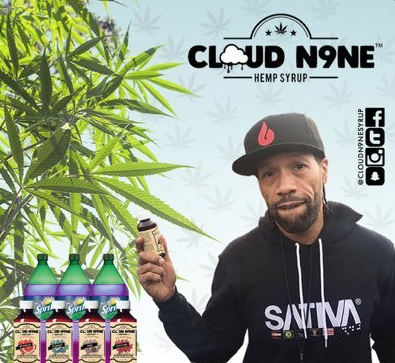
Even Actabliss has teamed up with rapper Riff Raff in a promotional contest to find who can design the most flamboyant and original cup from which to sip your CBD lean.
What’s Hot in CBD Syrups
Cannabis CBD syrups and liquid THC drinks are now highly popular and can be found in almost any medical marijuana dispensary. But like just about anything, some brands are better, or at least more well-known, than others. Some of the more popular brand name hemp and weed lean syrups include:
- Actabliss: based in San Diego, available in THC with CBD 2oz. bottles (higher THC and pure CBD coming soon).
- Cannabinoid Creations: hemp based syrups available in grape or cherry, each in AM or PM form.
- Cannavis Syrup: organic THC syrup handcrafted and made in small batches; available in eight fruity flavors (CBD syrup coming soon).
- Cloud N9ne Syrup: contains 60mg of Charlotte’s Web & AC/DC CBD strains in every bottle and absolutely no THC.
- Dreem CBD: comes in grape flavored AM & HD (daytime) 60mg & 200mg bottles
- Slactavis: THC & CBD syrups offered in 350mg, 1,500mg, 2,000mg & 6,000mg bottles (the strongest available), packaging more similar to cough medicine.
- Tree Lean: has 1,000mg of raw, blue agave THC infused syrup; available in seven flavors.

Of these seven, Cloud N9ne has become one of the most popular brands turning out CBD lean syrup. This is partly because the stuff has no THC, and in fact, doesn’t even have a CBD dose to classify it as real medical cannabis, making it legally available if you’re at least 18.
Featuring colorful flavors like watermelon, blueberry, grape and cherry, Cloud N9ne’s infused syrups are perfect for anxiety, insomnia, and pain relief, but can’t promise to provide the same level of effects as a true, cannabis-derived CBD drink would.
The company calls it a “hemp syrup,” though hemp contains cannabidiol (CBD) levels that are too low to be beneficial, which has about 64mg of (presumably hemp) CBD in each bottle. It also lists CBD-dominant strains AC/DC and Charlotte’s Web (created by crossbreeding with hemp) as ingredients, along with nine powerful, all-natural herbs.
However, the syrup’s specific ingredient amounts and ratios remain unknown; we assume its legal because the two practically pure CBD strains have been diluted with hemp and are listed in name only.
So how does Cloud N9ne produce its relaxing effects while seemingly lacking the potency to do it? This content confusion leaves the reason(s) for feeling high up in the air.
Could it just be a placebo effect? After all, other hemp-derived CBD products are marketed as being “available in all fifty states” and are thus nothing more than a dietary supplement with limited scientific evidence to back up any claims.
CBD vs. THC Syrups
Cannabis products richer in CBD (or Cannabidiol), a cannabinoid found in all cannabis, are generally more calming and relaxing than THC and provide significant medical benefits without the heavy “stoned” sensation commonly associated with THC.
Indeed, there are some legitimate, high-CBD syrups out there on the market in states where medical cannabis is legal, and which will afford you the real medical benefits of CBD. Of course, you’ll need a recommendation from a doctor if you hope to purchase such products legally.
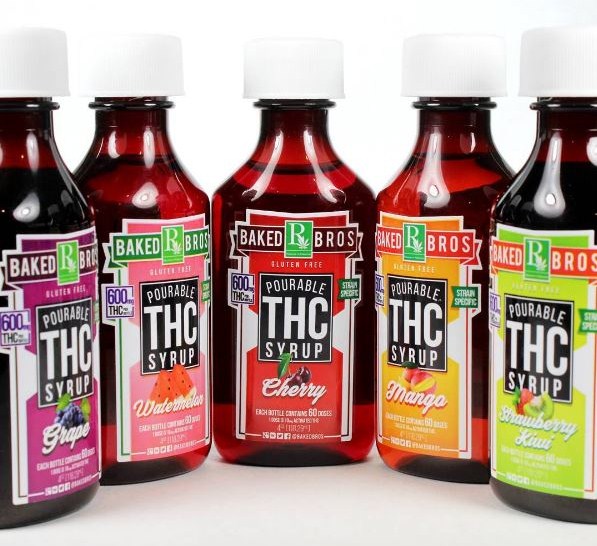
For those seeking the “stoned” sensation, or just want something stronger with real psychoactivity, THC-infused syrups and drinks are also becoming just as common.
Companies like Baked Bros, winners of High Times’ Cannabis Cup and many other awards, are making high-quality pourable weed syrups that will surely spice up your sodas and leave you leaning. Their 300mg and 600mg bottles are available in grape, cherry, strawberry kiwi, mango, and watermelon flavors.
But seriously, be careful with those kind of dose amounts, as even 300mg THC is enough to put even the most seasoned cannabis vet on their ass.
Some of these syrup products, like the marijuana they are derived from, contain a mixture of CBD and THC. Different ratios of each will provide different effects, so it’s best to experiment in small doses with each until you find what works for you.
Another common emerging product, liquid THC/CBD drinks, are similar in that they combine hemp-derived CBD or THC oil with a beverage. Drinks like Venice Cookie Co.’s “Cannabis Quenchers” are vegan/gluten-free and provide heavy pain relief, available in THC and CBD with a variety of ten complex flavors, including CBD mango.
Where Can You Buy CBD Syrup?
Where is Cloud N9ne syrup for sale? How much does it cost? On average, a 4 oz bottle of CBD syrup will cost you $30-40. But remember, these hemp-only CBD drinks aren’t what you’ll find on cannabis dispensary shelves. In fact, you’re more likely to find them on the shelves of your nearest grocery store.
If you are looking for real, cannabis-derived CBD products, the best place to locate CBD syrup is at legal cannabis dispensaries in your area, in states where cannabis-derived syrups are available.
If you’re looking for an even easier way to get your hands on this stuff (and you live in California), you can order from a wide selection of cannabis dispensaries online at getnugg.com.
How Much Should I Drink?
Remember, dosage depends on the type of CBD you’re taking. If it’s a hemp CBD syrup like Cloud N9ne, you don’t need to worry about THC (but should be aware of other ingredients intended to produce similar effects), and even if you downed the whole bottle, you still wouldn’t be getting a high-enough dose of CBD to be considered a “medical” product.
If you’re trying a syrup that has THC like Actabliss, it’s best to start slow and low then work your way up from there.
We also advise you do some research in advance, and always pay attention to how many milligrams of CBD and/or THC it contains. Read product reviews online, ask your friends, consult with the budtender taking your order (whether it be through an online delivery platform like Nugg or at a storefront dispensary), or even go so far as to ask your primary physician what he or she thinks.
Of course, that last suggestion is not an option for most of us, which is why NuggMD allows you to safely connect with a licensed, pro-cannabis doctor online to get your recommendation or medical marijuana card.
The evaluation process offers you an opportunity to ask a friendly and knowledgeable MMJ doctor any and all questions you might have related to using medical cannabis to treat your stress, anxiety, and any other problems!
Testimonials
“I like how [CBD syrup] isn’t a drug, although I was still expecting it to feel more like a high. It serves its purpose and it is a very relaxing and euphoric experience, and in its own bracket it’s flawless. It’s not what I expected but it’s definitely worth a try.” —James D.
“I was skeptical at first, but saw so much hype on [Cloud N9ne’s] twitter account from people saying they love it, I gave it a try. I’m glad I did. Not only does it taste good, I was super relaxed and feeling good…Shockingly it seems to be working better and better for me than my prescription for anxiety. I will definitely be buying more when I run out!” —Nicole B.
“I’m a long time customer of [CBD] syrup. I have COPD which happens to be a respiratory disease…[it] has in fact helped with relief of pressure as I live with a feeling of a rubber band around my chest.” —Peter C.
Final Thoughts
As CBD syrups continue to grow in popularity as a legal, THC-free substitute to opiates, alcohol, high sugar energy drinks and even coffee, more companies/brands are popping up trying to capitalize on this vacancy.
Some are clearly doing so to provide pain relief for those who don’t have access to insurance, or even a med marijuana card, while others are simply trying to profit from these sick by promoting a panacea that’s actually a placebo.
The world is a crazy place, but luckily you’ve got people like us to fill the knowledge gap so that you can make a purchase decision that aligns with your preferences and interests.
CBD Tincture: Dosage, How to Make It (Recipe), Effects & Benefits
8 Comments
Unless you’ve been living under a rock for the past few years, you probably know that products like CBD tinctures, which contain very little or no THC, have grown immensely in popularity. And for good reason. These liquid cbd drops have been proven (anecdotally, for now) to stop seizures & tremors in their tracks, and have garnered widespread media attention for that reason.
Indeed, cannabis oil tinctures produce zero psychoactive effects (that’s caused by THC, not CBD) and thus present an incredible new alternative to addictive prescription medications with countless side effects. Plus it doesn’t attract the vicious aggression of anti-cannabis zealots seeking to demonize cannabis.
CBD meds offer hundreds of thousands of Americans powerful relief from a host of ailments without the drowsy or stoned feelings, making them more attractive to children, old folks, and anyone who wants its medical benefits without the associated high.
Tinctures allow you to take an effective cannabis dose accurately, quickly, and conveniently. This way might be relatively unfamiliar to typical cannabis users, but if you keep reading you’ll discover everything you need to know about this awesome liquid medicine.
What you'll learn in this post:
[Click any of the section titles below to jump there]
- What Is a CBD Tincture?
- The History Behind Liquid CBD as Medicine
- What Are Cannabis Tinctures Used For?
- How Are CBD Tinctures Made?
- How to Administer a Tincture
- CBD vs. THC Tinctures
- Cannabis vs. Hemp-Derived Tinctures
- How Do You Make a CBD Tincture at Home?
- What Are Some Popular CBD Tinctures You Can Buy?
- Where Can You Buy These Types of Products?
What Is a CBD Tincture?
A tincture is a medical solution made from dissolving cannabis in alcohol. Most cannabis tincture products usually come in a half ounce bottle along with a dropper for easy dosing. Most cannabidiol tinctures contain 10% to 25% CBD, a much stronger concentration than you’ll find in any marijuana strain (with a few exceptions).
You might be wondering, how long does a tincture take to kick in? A few drops will elevate your mood without altering your mind in 30-90 minutes.
The History Behind Liquid CBD as Medicine
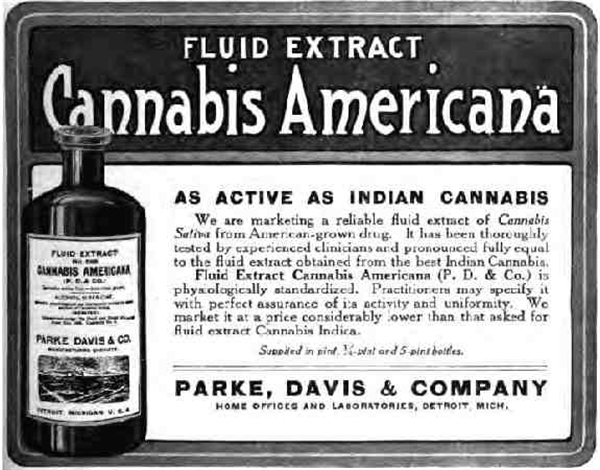
Cannabis tinctures have been around for more than a hundred years. In fact, it was prominently featured in the United States Pharmacopoeia as a painkiller and sedative until 1942 when it was declared a menace to society by Reefer Madness-fueled U.S. lawmakers who feared recreational marijuana would destroy America.
But politicians aren’t entirely to blame. After all, they were simply following in the footsteps of one Mr. William Randolph Hearst, who in the 1930’s feared hemp would pose a severe threat to his paper and timber companies and waged (successfully) war on anything that had to do with the plant. Naturally, that included cannabis, which is derived from the same plant.
As an aside, hemp is stronger, more durable, fire-resistant, more flexible, and a multitude of other factors better than timber or even steel. Some would argue that hemp should have rightfully become the primary building block of America’s modern industrial society, but instead it’s still outlawed to this day.
However, by the 1980’s, interest in marijuana tinctures rekindled as scientists and pharmaceutical companies began to recognize their incredible healing properties.
Unfortunately, the first official marijuana extract prescription pill, Marinol, failed miserably—mainly because it contained only THC extracts and no CBD. Its manufacturers realized that cannabidiol played a far greater role than previously thought in releasing cannabis’ medicinal properties, especially when combined with THC.
This phenomenon — that THC combined with CBD produces a more holistic remedy — is known as the “entourage effect,” and can be observed throughout the world of medicine, in which healing agents magnify one another’s effects.
What Are CBD Tinctures Used For?
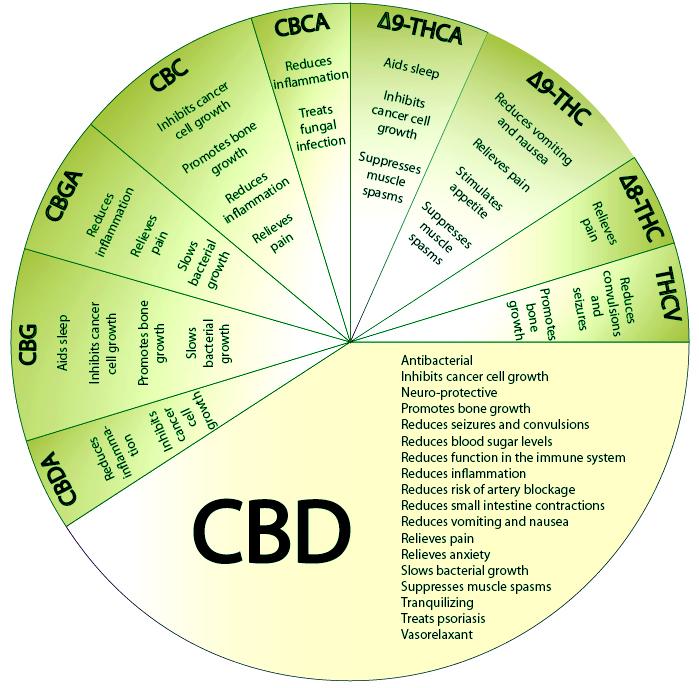
Tinctures have many medical applications and more continue to be discovered. Doctors have found CBD can fight cancer by inhibiting cell and tumor growth, cuts inflammation by as much as 50%, and reduces organ damage from a heart attack by a whopping 66%. CBD can be used treat several other diseases and conditions like:
- Acne
- Anxiety
- Autoimmune diseases
- Bowel disorders
- Crohn’s Disease
- Diabetes
- Fibromyalgia
- Insomnia
- Multiple sclerosis (MS)
- Mad cow disease
- Nausea
- Post traumatic stress disorder (PTSD)
- Schizophrenia
What Is a CBD Tincture Made From?
Over the past two decades, medical marijuana breeders have concentrated on growing the sticky-icky THC-rich strains most patients crave while letting CBD-specific products fall by the wayside. As a result, many of today’s marijuana strains contain less than 1% CBD, so if you want the same benefits a CBD tincture provides from a cannabis flower strain, you’ll have to smoke a whole lot of it.
Luckily there are a few CBD-rich strains that contain larger traces of CBD, and that’ve been used to make weed tinctures available at most California dispensaries. These strains include:
- Cannatonic: one of the most popular and most medicinal CBD-rich strains, it’s 6.5% CBD by weight and has a 1:1 CBD:THC ratio.
- Harlequin: with a ratio of 5:2 CBD:THC it gives you a mild sativa-dominant alertness but no real buzz.
- Sweet and Sour Widow: equal amounts of CBD and THC, the perfect introduction to new medical marijuana patients.
- Stephen Hawking Kush: offers the best of both worlds with indica-dominant cerebral effects and CBD’s stress-relieving capabilities.
- Sour Tsunami: created by marijuana activist, grower and CBD pioneer Lawrence Ringo, this high CBD tincture has redefined the parameters of medical marijuana.
- AC/DC: boasts a whopping 20:1 CBD:THC ratio for maximum pain and stress relief with just a hint of THC.
- Charlotte’s Web: a strain now famous for helping Charlotte Figi, a then 3-year old child fight her epileptic seizures.
- Lesser-known strains have tested as high as 18% and generally have a 3:2 CBD:THC ratio.
How to Administer a Tincture

Next to injection (which isn’t a common consumption method), sublingual cannabis tincture is hands down the fastest way to get the medicine into your system. Absorbed through the veins under the tongue, it enters the bloodstream by bypassing the stomach and digestive system, making it purer and more potent.
Taking it properly actually takes a few steps, so here’s how to get the most out of your CBD tincture:
- Squeeze a 2-4 cannabidiol drops under your tongue with an eyedropper according to your recommended dosage.
- Slosh it around with your tongue a few times and take several very deep breaths through your nose.
- Swallow after about 30 seconds. Despite containing very little THC, tinctures can make you very relaxed and sleepy, so don’t plan on driving or doing anything important until you understand the its full effects.
Additional methods
In addition to your favorite food, CBD drops can be used in any condiment, cocktail or candy you can dream up. Mix with your salad dressing for extra zest, dissolve a dash in a Hot Toddy to get through a cold winter’s night, or drizzle a few drops on ice cream to make your day at the beach more enjoyable. The combinations are practically endless.
CBD vs. THC Tinctures
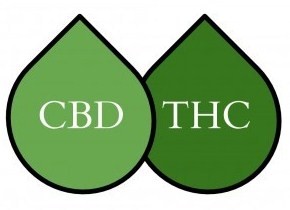
Medically speaking, the basic differences are that THC acts as an analgesic (pain killer), anti-emetic (anti-vomiting), and anti-inflammatory agent, while CBD exhibits anti-psychotic, anti-seizure and anti-anxiety properties.
Best of all, CBD seems to counter the negative effects of THC. In clinical research trials CBD has proven to increase relaxation, thereby reducing the paranoia sometimes associated with large doses of THC; its effect on the lungs can counter the ill-effects of smoking; and CBD also suppresses appetite, counterbalancing the “munchies” brought on by THC.
Granted, much of what we know about CBD has yet to be confirmed by extensive medical research, since both THC and CBD remain Schedule I drugs according to federal law (you can thank our buddy Randolph Hearst for that).
SEE ALSO: THC vs. CBD: Benefits, Drawbacks, & More
Cannabis vs. Hemp Tinctures
People have long argued that tinctures extracted from marijuana plants are far superior to those of hemp plants—but that was before CBD’s significance was recognized by the medical community. With all we now know about its properties, extraction methods and cannabinoid ratios, hemp tinctures are holding their own.
Fundamentally, marijuana and hemp are both cannabis plants containing the same cannabinoids, just in different ratios and quantities. Hemp contains only negligible amounts of THC, while some marijuana has upwards of 30% THC.
Hemp CBD, on the other hand, can be just as potent as marijuana CBD when properly extracted. It does require a lot more hemp, processing and money to produce the same amount as cannabis-dervied CBD, so the former is naturally more expensive.
Currently only a handful of companies, most notably Real Scientific Hemp Oil (RHSO), manufacture it by utilizing U.S. grown hemp (as opposed to Chinese hemp) and supercritical fluid extraction methods to yield more powerful and cleaner CBD extracts.
Buyers should beware of online retailers claiming to sell & ship quality CBD products. In fact, most of these sellers produce a very mild form of hemp-derived CBD (without the crucial extraction process mentioned above), and thus are essentially selling incredibly high-priced dietary supplements with negligible (if any) benefit to the user.
How Are CBD Tinctures Made?
There are several ways to make your own CBD tincture, but almost all of them involve high-proof alcohol and/or a crock-pot, which seem like a recipe for disaster. Instead, we’d like to present our own proprietary high-quality, alcohol-free tincture recipe.
Wait, isn’t alcohol in the very basis of tincture? Yes, it’s always been the standard solvent, mainly because it’s an excellent cannabinoid extractor. However, pure alcohol like Everclear is expensive, highly flammable, and not everyone’s cup of tea.
It’s 2017, and there’s a new solvent you can, and should, use—glycerin, a common food ingredient that’s 100% safe to consume (unless you’re vaporizing it in high temperature, that’s a whole other topic of debate). You can buy it on Amazon or at Wal-Mart and won’t need more than an 8 ounce bottle.
We’ll use cold maceration (extraction) since it preserves the terpenes and the integrity of the flower. Plus, glycerin’s sweet flavor makes it the perfect additive for baked goods and other sweets; it even tastes like a kiddie treat when ingested!
Admittedly, a glycerin tincture is slightly less concentrated than the traditional alcohol-based one, but taking a slightly larger dose will get you to the same place.
Follow these simple steps to make your own tincture:
- Grind at least 1 oz your high-CBD flower shake and nugs (kief optional) as finely as possible using a blender or coffee grinder, depending on the amount.
- Put your powdered cannabis and the glycerin into a glass jar, preferably a mason, and seal tightly.
- Position the jar on a window sill, constantly exposing it to sunlight, and let it marinate for 4-5 weeks (the longer the better). Once a day shake it to stimulate the cannabinoids.
- After the given time has passed, strain the tincture through a sieve or cheesecloth to remove the extracted cannabis. Don’t use a paper coffee filter.
- Finally pour the tincture into a dropper bottle, keep it refrigerated, and you’re good to go!
While it does take a long time to make, it’ll be worth the wait as this glycerin cannabis tincture is rich in terpenes, taste, and healing power.
But what if you don’t want wait a month to try a high-quality CBD tincture?
What Are Some Popular CBD Tinctures You Can Buy?
There aren’t many cannabis CBD tinctures on the market (although more spring up seemingly every month), but here are some brands that make very powerful, effective products:
Bhutan
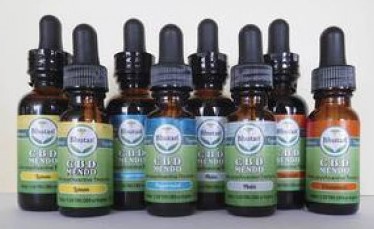
Bhutan’s Mendo CBD tinctures are derived from the Emerald Triangle’s richest CBD strains. Inside each bottle is a massive 20:1 CBD:THC mixture that’ll stop or calm almost any pain, plus give you the focus and drive needed to conquer your day. Available in original, lemon, peppermint and cinnamon flavors. Need more balance? Try their then Mendo Focus 1:1 CBD: THC tincture for a more even-keeled cannabis buzz.
Cannariginals

The company’s 420 EMU Essentials line offers a unique tincture called Mystic Mango Medicated Elixir that infuses light, fruity taste with a mammoth 280 milligrams of CBD (2:1 CBD:THC) in an all-natural, grade A emu oil to sooth any internal or external condition. Contains no sugar, fat or gluten.
Chronic Health (a Green Halo company)
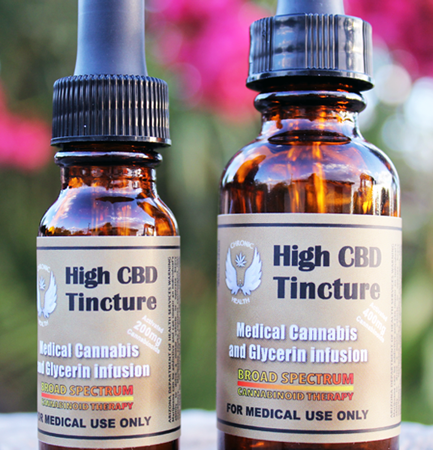
These infused Arizona elixirs come in two formulas: High CBD Glycerin Tincture and Glycerin Tincture, which has a balanced CBD:THC ratio. Both are vegetable-based and available in half-ounce (200mg) and one ounce (400mg) bottles. The only problem is the company doesn’t specify the amounts of CBD and THC in each.
Venice Cookie Company
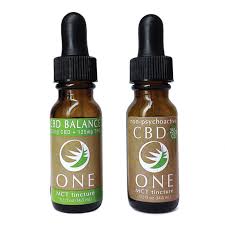
Recognized more for their popular edibles and drinkables, this Los Angeles company also creates indica, sativa, and CBD oil and alcohol based tinctures. CBD One (250mg) is purely CBD and CBD Balance One (125mg) contains equal parts CBD to THC. Both are sugar and gluten free.
Where Can You Buy CBD Products?
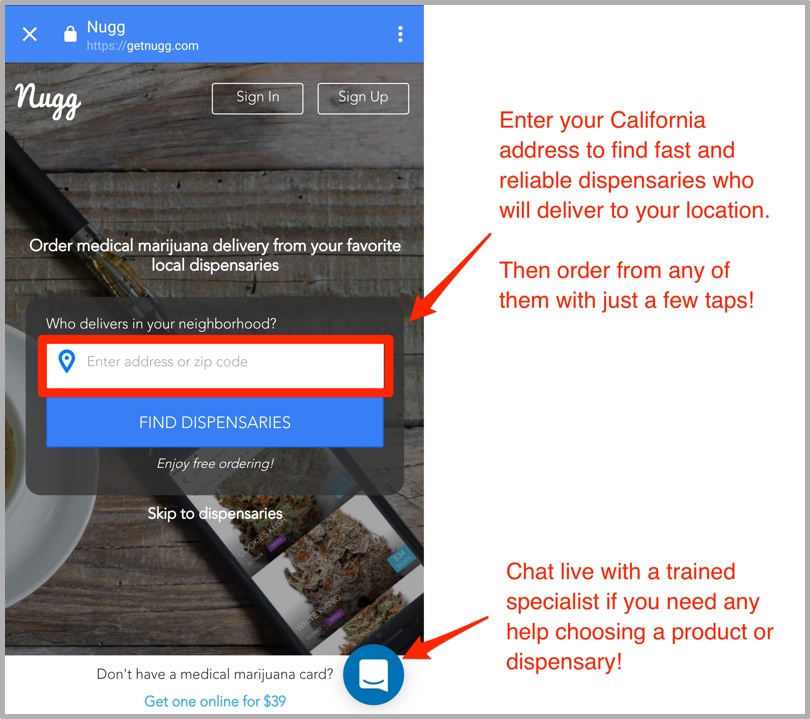
Where are these CBD tinctures for sale? They’re not available in every dispensary/collective, so you’ll probably need to do some research to find them around you, or just let Nugg and our sister site, NuggMD do everything for you.
We can provide safe and secure access to a medical marijuana card (100% online) and delivery services offering CBD tinctures, hot marijuana strains, potent edibles, and high quality CBD products from a network of the top dispensaries and growers throughout California.
And when you get your doctor’s recommendation through us, you’ll receive a $20 credit on your first delivery order!
THC vs CBD: Their Effects, Health Benefits, & Medical Benefits
1 Comment
THC versus CBD. What’s the difference, and what does it mean for your marijuana consumption?
What you'll learn in this post:
[Click any of the section titles below to jump there]
“This Is a Miracle Drug”
Poolside in Covina, California, “Sylvia”* daintily purses her lips and takes a quick rip of her joint, deceptively potent despite its modest roll.
“I purchase only top shelf stuff. I learned from my kids…quality over quantity,” she smiles through the tendrils of Bubble Gum scents as they waft through the air.
“I have a little bit of everything. Some glaucoma. Nausea from my heart medicine. Arthritis in my hands. And trouble sleeping and anxiety, most of which started when my husband passed away five years ago.” She issues a wry grin and says “Now I don’t have to go out much, so I’ve become quite the bud-tender.”
She says this all in an unflinching, matter-of-fact manner, as if describing a medical procedure. “When someone recommended medical marijuana years back for all my ailments, I laughed. I hadn’t used the stuff since high school, and even then I was not even a recreational user.”
But she got a prescription, and now expertly names of her favorite strains with the energetic vigor of a Napa Valley sommelier. She fingers a particularly purplish offering and notes “We just got this in. See the hairs on this one? How many crystals? This is super THC-loaded!”
Cannabis & the Cannabinoid Connection
Marijuana’s strains can be as colorful and varied as wildflowers themselves, yet all the plants have a remarkably popular way of discussing and measuring potency: THC.
All marijuana plants contain dozens of cannabinoids. Some are very well-known. And the undisputed king of all cannabinoids is tetrahydrocannabinol. Name-checked in music videos and a familiar acronym to even the most conservative critics, THC sits atop the mountain of infamous marijuana chemical compounds.
When enough is consumed, THC is believed to be primarily responsible for the head rush associated with marijuana, the euphoric “high” feeling that users crave. When discussed by critics as weed’s role as a gateway drug, this “buzzed” feeling tops the list as the most worrisome element, leading users down the route to addiction and harder substance abuse.
But amidst the sticky leaves of the bud plant lies a plethora of other compounds and cannabinoids besides THC.
As marijuana cultivation has become a more accepted past-time, cultivating methods that enhance these other cannabiniods is becoming a serious science for both medical researchers and hobbyists. Chief among them is CBD (we’ll soon uncover the mystery behind THC vs CBD), short for cannabidiol.
Chief difference between THC vs CBD, simply put, is THC gets you stoned and CBD does not. The fact that patients can be treated with CBD without the troublesome side effect of getting stoned has lead to an intense look at CBD’s potential and future uses in both the recreational and medical cannabis industry.
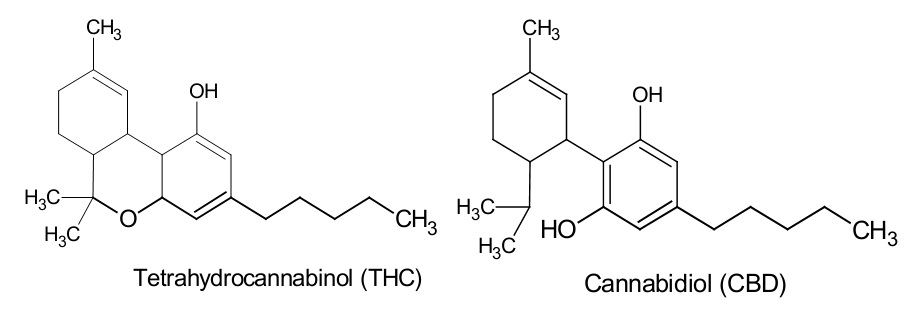
The concept of safer medical marijuana with less side effects opens a world of possibilities of treatments, not just limited to humans.
“I’ve even given [medical marijuana] to my dog. She was thirteen and half blind, and her legs started to go,” Sylvia reveals. “Friends told me to put her down, but I just felt she had more time, and I hadn’t tried everything. I heard that there was cannabis oil you could give your pets, and I did the research.”
Luther, a surprisingly spry 16 year old dachshund mix, lays glued to Sylvia’s thigh on the couch, contently snoozing the day away. “This is a miracle drug. Anyone who says otherwise just doesn’t have a clue.”
“People Won’t Hold It Against You”
“Emily”* sits under the forlorn bleachers of her local high school. Her older boy cousin has had a connect in Berdoo for years. This slummy San Bernardino section of patchworked tract houses and failed commercial ventures projects a declining future through the hazy afternoon sunlight.
An opaque cloud explodes from her mouth as she smoothly slips her vape pen back into her pocket. “Vaping is literally the best thing to happen to weed. I vape everywhere now.”
The very picture of the recreational user, Emily nonetheless carries the picket fence picture of an ideal child to a tee. Boasting a GPA “in the high 3’s” and a veteran of several school organizations, she has already been accepted to three colleges, with no final decisions made. “I’m still waiting on Stanford, but I don’t know. I’m thinking I may stay local.”

“Smoking completely helps me study and keeps me focused. I always figured, rather than some of that nasty chemical stuff, why not use the all-natural stuff I’ve already tried?” she reasons. “I’m not saying we should all self-medicate, but I think smoking weed is much more like drinking coffee or having a cigarette than injecting a needle in your arm.”
Especially when you consider how the THC vs CBD conversation reveals that consuming different types of cannabis does not lead to madness and debauchery. Instead, different people can experience different medical and recreational applications and benefits of marijuana.
Taking a Hit Without Getting Lit
A leading argument against legalization of marijuana is the unpredictable reaction different people have, as well as proper diagnosis/dosage/strain versus recreational usage.
See also: 7 Tips to Control Your Cannabis Dosing
Both THC and CBD are found in marijuana, and both arguably have medicinal qualities. But both can provoke significantly different reactions in people, and this difference has become the central argument in the future of medical marijuana. It truly is: THC vs CBD.
Probably the main difference between the two ingredients is the psychoactive component. THC has been well-documented to cause anxiety or paranoia among new users. However, CBD is particularly non-psychoactive, meaning there is no feeling of euphoria associated with getting high.
In fact, CBD not only counteracts the effects of THC, it can reduce anxiety when administered by itself. Therefore, CBD is favored by the medical community, which prefers treatments with little to no side effects.

There is also the element of antipsychotic properties. THC produces psychosis like effects but CBD can protect marijuana users from this “super high.” CBD is actually being tested as a possible anti-psychotic medication and solution for illnesses that range from bi-polar disorder to schizophrenia.
Recent research published by Neuropharmacology reveals that CBD “induces rapid-acting anti-depressant-like” effects. “Our findings indicate that CBD could represent a novel fast antidepressant drug, via enhancing both serotonergic and glutamate cortical signaling,” explained researchers.
Though she had never before heard of the difference of various marijuana chemicals (THC vs CBD), Emily was sold on CBD’s future benefits.
“I’m a huge fan of CBD research!” exclaims Emily. “If it’s true that you can get the same productive results without the high, the stereotype of the lazy stoner won’t be as relevant anymore. Then maybe people won’t hold it against you when they find out you smoke bud.”
“I Have to Function Safely”
“Big Truck,”* a mountain of a man easily topping out over 250 pounds, heaves his heavy frame out from his compact car, almost comically too small for his considerable girth. The slight sedan groans with relief as the springs bounce back with relief.
“You’d think they (his company) could afford something for the larger man,” he cheerfully observes, noting the irony of his moniker coupling with his designated ride. “I’ve always been a pickup kinda guy, but I can’t do off-road anymore. For a while, the hands couldn’t take the shakes.”
Big Truck settles comfortably into a kitchen chair and begins nursing a Bud Light. Understandably low key about his identity due to his employment as a delivery driver, he nonetheless is a huge proponent for medical marijuana.
“Listen, okay? These hands, I could hardly grip the wheel. Three straight years, and it was a struggle every minute of every day. I’d drive with while biting my fist, to dull the pain of the soreness. But that’s the struggle…I need something for the pain, but I don’t want to be loopy or sleepy all the time. I have to function safely.”

What’s the Legality of THC & CBD?
Ask around, and you’ll find one of the principal uses for marijuana, whether prescribed as medicine or for recreational usage, is a sleep aid. Most of marijuana’s drowsy effects come from the cannabinoid THC, but on the other hand, CBD actually promotes wakefulness.
This results in CBD strains of marijuana being a poor choice for those who are trying to use it for sleep aid reasons, but an ideal selection for those who need daily routine functionality with their medical management choices.
CBD-based treatments would also be an appealing treatment option for patients suffering from ailments such as anti-inflammatory, anti-spasm effects, without the lethargy or dysphoria.
As with marijuana itself, the status of CBD and its legality in the United States remains unclear. CBD is technically illegal as it is still considered a Schedule 1 drug under federal law.
But significant gains have been opening the market to new CBD-based alternatives. Only recently was a pharmaceutical version called Epidiolex approved for the market. Produced by GWPharma, the latest version of the marijuana-based medication was used by the FDA and cleared to be tested with children who suffer from severe epilepsy.
Epidiolex trials have been so successful that it has raised the possibility of marijuana refugees, or families that split up or migrate to states with more permissive medical marijuana laws, such as Colorado and Washington state.
One such family, the Wakelys of Rhinelander, Wisconsin, is having the hard debate on how to treat son Eli’s aggressive epilepsy, as they search for access to marijuana strains rich in CBD. “We just want him to have a good life without seizures,” adds Lynne Wakely.
In fact, marijuana has been a medical option in human society dating back thousands of years.
As Dr. Sanjay Gupta, neurosurgeon, medical professor and Emmy-award winning chief medical correspondent for CNN, remarked as he harshly criticized marijuana’s Schedule 1 classification.
“The science is there. This isn’t anecdotal,” he remarked in 2013. “We have been terribly and systematically misled for nearly 70 years in the United States. It doesn’t have a high potential for abuse, and there are very legitimate medical applications.”
Waxing on the cloudy legality of weed in America, Big Truck has a pragmatically fatalistic attitude. “I don’t want to do anything illegal, but at a certain point I want to survive pain-free. Not comfortably, but pain-free.”
Big Truck pops the top off a prescription bottle and shovels out two black pills, roughly a third the size of a man’s pinky. “Pretty good size, but I’m a big boy,” Big Truck remarks jovially as he swallows them down sans water. “I know these ones are billed primarily as THC pills. That’s why I only take them when I get off, my closers.”
Asked if he was worried about drug testing at his job, Big Truck shrugs it off. “If it happens, I figure it out. I’m not driving people anyways. Plus I don’t take a lot. I’m safe. In the morning, I’ll have an edible or two, something that wakes you up and evens out the pain. I even try out the creams. But yeah, if I feel buzzed I know it’s time to cut myself off.”
Reading about the developments in the industry, the lumbering driver optimistically continues to believe in the future of marijuana and medicine and what CBD research has done already. “I never knew the chemical differences were the cause, but whatever makes it safer is good by me.”
It’s safe to say many consumers don’t know the difference between THC vs CBD…
Mainstream Acceptance of Cannabis
No matter the varying opinions in the debate of the validity of THC vs CBD, even the most ardent critics admit that marijuana for medical purposes is gaining more and more mainstream acceptance.
The advent of CBD exploration and its stone-less alternative to the buzzed experience that THC-filled strains produce today has the medical community cautiously excited about the possibilities, even as the legal ramifications have yet to be unveiled.
If test results continue to bear positive results and more communities vote to allow the sale of medical marijuana, sufferers of ailments varying from epilepsy to schizophrenia might have a more effective, more socially acceptable medication to turn to in the coming years.
Summary: THC vs CBD
- THC has been well-documented to cause anxiety or paranoia among new users.
- CBD is particularly non-psychoactive, meaning there is no feeling of euphoria associated with getting high.
- THC is believed to be primarily responsible for the head rush associated with marijuana.
- Most of marijuana’s drowsy effects come from the cannabinoid THC, but on the other hand, CBD actually promotes wakefulness.
- CBD-based treatments would also be an appealing treatment option for patients suffering from ailments such as anti-inflammatory, anti-spasm effects, without the lethargy or dysphoria.
- CBD is technically illegal as it is still considered a Schedule 1 drug under federal law, but significant gains have been opening the market to new CBD-based alternatives.
The Wonder Drug: Medical and Health Benefits of Marijuana
1 Comment
“What, if any, are the medical and health benefits of marijuana?”
It’s a frequently asked question, and rightfully so.
23 states and the District of Columbia have legalized the use of medical marijuana. Spurred on by the increasing information made available from research studies and trials from around the globe, many ‘experts’ are beginning to see cannabis for what it is:
- A potent medicinal drug with the potential to improve overall quality of life; and
- Medicine with limited-to-no side effects (consider all of those pharmaceutical TV advertisements and their list of side-effects a mile long, like Belviq could soon become a thing of the past).
There’s a reason medical marijuana has come to the forefront of America’s attention in recent years. It’s quite literally a miracle plant, a natural ‘wonder drug,’ And for millions, it is a literal life-saver, providing countless health benefits and treatments for ailments. But it isn’t for everyone, and with all the noise surrounding the plant, it can sometimes be difficult to comprehend what the actual health benefits of cannabis are, and how to determine if it’s the right medication for you.
Here you’ll learn about ten ways medicinal cannabis can benefit you and your health.
What you'll learn in this post:
[Click any of the section titles below to jump there]
- Cannabis 101
- Cannabis Can Protect Your Vision
- Cannabis Provides Relief for Cancer & AIDS Patients
- Cannabis for Pain Relief
- Cannabis Decreases Anxiety, Combats PTSD
- Cannabis Counteracts Autoimmune Disorders like Lupus & Rheumatoid Arthritis
- Cannabis Helps Manage Epilepsy & Other Seizure Disorders
- Cannabis Slows Progression of Alzheimer's
- Cannabis Benefits Cancer Treatment
- Cannabis Lessons Side: Effects in Hepatitis C Treatments, Increases Overall Treatment Effectiveness
- Cannabis Calms Parkinson’s Tremors
- Conclusion
Cannabis 101
To start on the right foot, let’s cover some of the basics, or Cannabis 101 as I call it.
What is it? Cannabis is the scientific name for a “tall plant with a stiff upright stem, divided serrated leaves, and glandular hairs,” called the for the marijuana plant.
The cannabis plant produces several naturally occurring compounds called cannabinoids, which react with the human body in different ways. The most famous of these cannabinoids is the delta-9-tetrahydrocannabinoid, commonly dubbed “THC.” It’s the psychoactive cannabinoid that gives you that notable “high” feeling when smoked, ingested, vaporized, or applied (sublingually or topically).
In recent years, another cannabinoid called cannabidiol, or “CBD” has become the focal point of significant scientific research. Numerous studies have shown that CBD has medicinal value without the psychoactive characteristics of THC. In other words, it has specific, medical benefits and applications and won’t get you high.
There are several other compounds found in the cannabis plant, but these are still little understood. Hopefully with the reclassification of cannabis (down from its current Schedule I drug ranking), we’ll see increased funding for medical research of cannabis.
For now, as far as science and medicine are concerned, the entire value of cannabis is extracted from its THC and CBD compounds. What’s noteworthy is that the method by which these compounds are delivered to the body hasn’t been a focal point of scientific research. In fact, scientists tend to conduct studies with cannabinoids that have been extracted from the plant or synthesized in a lab. That means there’s little information available as to whether the effects of THC & CBD differ when applied via new cannabis forms like concentrates, waxes and hash. This also poses the question of whether cannabis maintains the same health benefits to users when consumed in different forms.
And that’s important to bear in mind when comparing scientific studies to the experience of the typical user.
Now that you’ve mastered the basics of cannabis let’s explore what else it can do.
Cannabis Can Protect Your Vision
Whether you know someone personally or just watched Zach Galifianakis & Robert Downey Jr. in the film, Due Date, you’re likely aware that cannabis has been shown to improve the lives of glaucoma patients.
Glaucoma is actually a group of eye diseases that cause abnormally high pressure in they eye, damaging the optic nerve, causing significant pain. It’s one of the leading causes of blindness in the U.S., can occur at any age (but is most common in adults), offers no warning signs, and causes irreversible vision loss.
The good news is that medical marijuana eases the symptoms of glaucoma, by reducing stress on the optic nerve. In fact, glaucoma was the first condition to be approved for treatment with marijuana, since cannabis prohibition in the 1930’s.
“No adverse effects from the smoking of marijuana have been demonstrated.” Federal Judge James Washington, 1976
Fast forward to the 1970’s, when a man named Robert C. Randall sued the government for the right to treat his glaucoma with marijuana. In 1976, federal Judge James Washington ruled for Randall. He found that “while blindness was shown by competent medical testimony to be the otherwise inevitable result of the defendant’s disease, no adverse effects from the smoking of marijuana have been demonstrated.”
Since then, other, less controversial, treatments have become available, leading the American Glaucoma Society to remove THC from its list of approved treatments. But that doesn’t change the undeniable impact Randall’s case has had in the fight for medical marijuana use.
Cannabis Provides Relief for Cannabis & AIDS Patients

The most widely recognized benefit of cannabis for medical use (and the only one currently accepted by the Food and Drug Administration) is its effectiveness in relieving nausea and loss of appetite. Both conditions are common side-effects experienced by cancer patients undergoing chemotherapy, and as well as AIDs patients experiencing its associative “wasting syndrome.”
Researchers found that THC was undeniably effective in reducing nausea and increasing appetite in clinical trials. They also figured out a way to synthesize THC in a lab, thereby avoiding cannabis plant restrictions imposed by the federal government.
Synthetic THC is currently available under the brand names Marinol and Cesamet. Dr. Douglas Throckmorton, Deputy Director of the Center for Drug Evaluation and Research (CDER) at the Food and Drug Administration, testified before the U.S. House of Representatives that “These products have undergone FDA’s rigorous approval process and have been determined to be safe and effective for their respective indications.”
The U.S. government cites the availability of synthetic THC as a key reason for their opposition of widespread medical marijuana legalization. By that standard, the availability of synthetic THC should immediately call for the reclassification of cannabis from it’s current status as a Schedule I drug, which effectively claims that there are zero medical benefits of marijuana. But alas, hypocrisy is rampant this day in age.
What the government fails to recognize is the vast accumulation of anecdotal evidence by many cancer and AIDS patients showing synthetic THC is inferior, and unpleasant, when compared to other consumption methods — like smoking the plant itself, which means these patients might not be receiving the full effects and benefits of cannabis.
In fact, it was the great outcry from those same cancer and AIDS patients, seeking relief from their symptoms, which supplied the biggest push for the medical marijuana movement in California. That drive resulted in the first compassionate use law in the U.S., enacted by California voters in 1996.
Cannabis for Pain Relief
Did you know that if someone say they’re “feeling no pain” when using marijuana, studies are suggesting that what they’re saying is literally true? THC and CBD are being closely studied to examine their effectiveness in treating chronic pain. The hope is that these studies will validate the existing anecdotal evidence: that THC, CBD, or similar cannabis compounds are more effective than current opioid pain medications for a variety of conditions including arthritis, diabetic neuropathy, muscular sclerosis, cancer and other neurological conditions.
And even if the cannabinoids are found only to be equally as effective as existing pharmaceuticals, it would still be a landslide victory. Why? Because cannabis doesn’t come with the scary list of nasty side effects that opioids carry. The benefits of marijuana far outweigh any associated side effects, which are very limited and minor in nature.
One case study gave the following insight into the effectiveness of THC vs. CBD in treating his pain.
The patient, a chronic pain sufferer, who regularly uses medical marijuana to alleviate his daily struggles with chronic pain said that the pain (due to arthritis and a rare degenerative condition in the spine) can render him relatively immobile on certain days.
Initially, the patient experimented with virtually every type of cannabis consumption I’ve ever heard of: smoking flower, vaporizing flower, dabbing concentrates, vaporizing concentrates, ingesting edibles, drinking THC-infused beverages (like Sprig soda), applying topical rubs and ointments, etc. to little or no success.
He stated that he had found relief in certain high-THC and high-CBD strains like Blackberry Kush and ACDC (strains high in both THC & CBD tend to make the best pain medicines), but that it wasn’t until trying high-CBD products in the form of sublingual drops that he found his real medicine.
Based on personal experience, the patient advised that sublingual drops were preferred as they don’t imbue users with the typical “high” or “baked” feeling. He, instead, noticed significant pain relief without the psychoactive effects. He reported feeling more comfortable in daily activities, remarking that that the drops had the additional benefit of reducing his smoking consumption to nearly half.
Cannabis Decreases Anxiety, Combats PTSD

A 2010 study by Harvard Medical found that in small doses cannabis reduced anxiety, improving the user’s overall mood and providing a generalized sedative effect, similar to over the counter medications but without the side effects.
It has been approved for treatment of Post Traumatic Stress Disorder, or PTSD across the country, and in New Mexico is the primary reason patients get a license for medical marijuana use.
And the Department of Health and Human Services even signed off on a government proposal aimed at further study into the benefits of marijuana for veterans living with PTSD – the only time the U.S. government has every authorized a proposal that includes either vaporized or smoked marijuana – a classified drug with no “accepted” medical applications!
Naturally occurring cannabinoids, similar to THC, assist the body in controlling the system that causes anxiety and fear in both the brain and the body.
John, a two-tour veteran of the Iraq conflict “swears by it,” as treatment. “It gives me relief from the anxiety but doesn’t leave me fuzzy-minded.” Adding that it, “helps me sleep with no nightmares.”
Because marijuana disrupts the typical sleep cycle by interrupting some of the later stages of REM sleep — the dream state — many sufferers of PTSD find relief from night-time terrors when using cannabis. When REM state is disrupted, the nightmares often are as well, aiding veterans in achieving restorative sleep.
Cannabis Counteracts Autoimmune Disorders like Lupus & Rheumatoid Arthitis
Lupus, the common name for Systemic Lupus Erythematosus, is an autoimmune disease characterized by swelling and inflammation of joints in the body, kidney, lung, and heart damage, among other symptoms. With autoimmune diseases such as Lupus, and Rheumatoid Arthritis, the body’s immune system becomes hyperactive and attacks the healthy tissues in the body.
In 2014 the Journal of Biological Chemistry published research that illustrated how THC can “suppress the body’s immune functions,” and that’s good news for people living with autoimmune diseases like Lupus.
Additional benefits of cannabis use like relief of associated nausea and body pain, make it a desired choice among some patients.
Emma V., a recently diagnosed Lupus patient in the UK, said that cannabis “was really the only choice.” Adding, “I can take one drug [cannabis] and get relief from multiple symptoms and feel well enough to get on with my day, or I can take a handful of tablets [OTC medications] and be useless.”
Cannabis Helps Manage Epilepsy & Other Seizure Disorders

Approximately 1% of the world’s population suffers from some form of epilepsy. And of those nearly 72 million people (more than twice the population of Canada!) it is estimated that between 20-30% of all individuals with epilepsy are not “adequately controlled with conventional drugs.”
In 2003, a study performed by Virginia Commonwealth University found that “cannabinoids work at controlling seizures.” The cannabinoids activate a protein, commonly known as the CB1 receptor, that is responsible for “controlling excitability and regulating relaxation.”
And it’s not just epilepsy.
Patients suffering the symptoms of Dravet’s Syndrome, a severe disorder that causes seizures and developmental delays, are also finding some relief thanks to cannabis use.
Parents of five-year-old Colorado native Charlotte Figi had found little benefit in conventional medications for treating their daughter’s condition. They did, however, see a drop in the frequency and intensity of her seizures – from 300 per week, to just one approximately every seven days – once they began treating her with CBD, the non-psychoactive cannabinoid.
Cannabis Slows Progression of Alzheimer’s
It doesn’t get much scarier than Alzheimer’s Disease. A debilitating, progressive disease with no known cure, stealing memories and experiences from lives around the world. But that could all be changing. A 2006 study done by Kim Janda, of the Scripps Institute in California, found that THC blocks the accumulation of amyloid plaque, the primary marker for Alzheimer’s, better than anything currently used. It does so by blocking the enzyme that makes the plaques. The plaques kill brain cells, causing Alzheimer’s.
“These findings offer convincing evidence that THC possesses remarkable inhibitory qualities,” said Janda in conversation with MSNBC, “especially when compared to AChE inhibitors currently available to patients.”
More recently, a 2014 study published in the Journal of Alzheimer’s Disease, reported similar findings to support the effectiveness of THC in “prohibiting the growth of toxic amyloid plagues.”
Cannabis Benefits Cancer Treatment
We’ve all heard that cannabis is beneficial for cancer patients. The FDA has approved its use (in the form of Nabilone) when prescribed by a doctor anywhere in the U.S., and tens of thousands of cancer patients already use the medicine for relief from harsh chemotherapy, but what if it did something more? What if cannabis could stop cancer? Recent studies say it very possibly can. The mounting evidence supports the potential for THC actually to prevent the spread of the disease.
Researchers at the San Francisco-based California Pacific Medical Center reported that CBD may help to prevent cancer cells from spreading.
The study focuses on ID-1, the gene that has one job: it causes cancer to spread. Pierre Desprez, one of the scientists responsible for the groundbreaking research has spent ‘decades’ studying the gene. Desprez joined forces with fellow scientist Sean McAllister, who was working with the effects of CBD. The pairing resulted in research that shows, “Cannabidiol could essentially ‘turn off’ the ID-1.”
The American Association for Cancer Research also reports that marijuana can impede tumor growth in lungs, breast and brain cancers.
Cannabis Lessons: Side-Effects in Hepatitis C Treatments, Increases Overall Treatment Effectiveness
The treatment for Hepatitis C, a potentially deadly viral infection affecting nearly 4 million Americans, is long, costly and painful to endure. Consisting of months-long therapy of two heavy hitting pharmaceuticals, ribavirin and interferon – the side effects of which include intense fatigue, severe muscle aches, nausea, depression and loss of appetite – causes many patients actually to stop taking the treatment, despite resulting permanent liver damage.
But a 2006 study, published in the European Journal of Gastroenterology and Hepatology reported that 86% of patients who used cannabis, completed their Hepatitis C therapy when compared to 29% of those who did not use cannabis. The study also reported that the effectiveness of the treatment appeared to be enhanced. They said that 54% of patients who used cannabis kept their viral levels low, compared to only 8% of non-users.

Cannabis Calm Parkinson’s Tremors
Israeli researchers recently discovered the benefits of marijuana on Parkinson’s disease tremors and associated pain.
Ruth Djaldetti, MD, of Tel Aviv University Israel, presented the findings of her report at the International Congress on Parkinson’s Disease and Movement Disorders. She explained how people living with the debilitating disease ranked their disease on a standardized “Unified Parkinson’s Disease Rating Scale.” The UPDRS rating helps medical professionals understand the scope of a patient’s personal difficulties. Before using cannabis, patients reported an average rank of 33. Approximately thirty minutes after using cannabis, these same patients reported a drop to an average rank of 24.
In conversation with Ed Susman of MedPage Today, Dr. Djaldetti said, “We not only saw improvement in tremor in these patients, but also in rigidity and in bradykinesia.” Dr. Djaldetti said she “would recommend use of marijuana to my patients.”
Cannabis has also been reported to be a good sleep aid for many people living with Parkinson’s. But perhaps the most interesting findings were the reports of increased fine motor skills among patients who used cannabis.
Conclusion
The benefits of marijuana are real. With mounting evidence supporting the wide and varied uses of cannabis as a life-enhancing medication, we can only hope it will soon receive the widespread recognition it so readily deserves.
Review: Miss Mary Jane’s Chocolate Caramel Cake Pop Edible
Leave a CommentWhen I was given one of Miss Mary Jane’s Chocolate Caramel Cake Pop Edible, it was alluded to that they would be fluffy, moist, and delicious. But somehow being told doesn’t fully prepare you for reality.
This cake pop is formed using a base of brilliantly velvet chocolate cake with an indulgent core of soft caramel filling. Surrounding is a thin crispy crust of decadent chocolate, drizzled to perfection to complete the aesthetic effect. There is only a hint of cannabis to the taste, as it’s difficult to mask completely.
That’s why chocolate is so often used in edibles – it’s a complementing effect. Rather than cover up the green flavor, the chocolate uses it to its benefit.
This medicated cake pop edible was made with Charlotte’s Web, a CBD rich strain first bred by the Stanley brothers from out of Colorado for Charlotte Figi, an 8 year old Dravet Syndrome patient who found relief from her seizures with the high CBD strain.
Miss Mary Jane’s Edibles gets their Charlotte’s Web from Coastal Collective in Santa Ana, one of the only Southern California dispensaries to carry this prized genetic.
At nearly 60 mg of total cannabinoids, this edible produces an incredibly sedative high, making it a fantastic treatment for the physical symptoms of anxiety.
Since CBD counteracts the anxiety or “paranoia” effect created by THC, Charlotte’s Web provides relief rather than creating more problems. There is an amazing physical relaxation, as pain melts away along with your stress.
Proponents of CBD rich products tout a lack of intoxication in the effects, making it great for those looking to avoid the traditional cannabis high. I would agree there’s not a high level of “intoxication”, but I did find plenty of light, smooth social interaction as a result of ingesting this product.
This edible made me re-think the value of CBD, being a sativa fan myself. As a sufferer of both pain and anxiety, this edible provided effective relief for my range of symptoms. While some patients’ utilization of high THC for other medicating needs prevents them from relying solely on CBD rich products, edibles like Miss Mary Jane’s Edibles’ chocolate caramel cake pop have plenty of pragmatic medicating uses.
The original version of this article can be found at OC Weed Review, a Nugg content partner.
Cannabis and Yoga: a Collective of the Mind, Body & Soul
1 Comment
As one of Mother Nature’s finest herbs, cannabis is renowned as a sacred plant with incredible power. It’s an alternative medicine with a plethora of benefits. And the more I explore this therapeutic avenue, the more I see cannabis playing a key role in our healing and harmony.
Generationally, Cannabis has been utilized for wellness practices, spiritual ceremonies, and culturally significant social gatherings. The physical, mental, emotional, and spiritual benefits provided with responsible use are abundant and, thankfully, growing recognition!
AS SOCIAL ACCEPTANCE OF ANCIENT PLANT MEDICINE IS GRASS-ROOTING ITS WAY THROUGH OUR STREETS, LIKE-MINDED THINKERS ARE COMING TOGETHER TO FORM REVOLUTIONARY COMMUNITIES.
What you'll learn in this post:
[Click any of the section titles below to jump there]
Cannabis & Yoga: a Collective of the Mind, Body & Soul
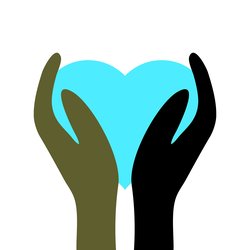
From the moment I connected with Christian, owner of the Natural Wellness Foundation (whose cannabis menu can be found on Nugg’s website here), I knew there was much more to his business than being a reputable delivery service with quality cannabis products. I sensed a revolutionary mission statement behind his business plan and was eager to learn more.
THE NATURAL WELLNESS FOUNDATION IS A COMMUNITY CENTERED AROUND CANNABIS RESEARCH, EDUCATION, EFFECTIVE HEALING PRACTICES (THAT ARE SCIENTIFICALLY SUPPORTED), AND A DESIRE TO CREATE A SUPPORTIVE COMMUNITY FOR ITS PATIENTS TO HEAL WITH AND SOCIALIZE WITHIN.
Christian: “Aside from having a selection of exceptional medicinal grade cannabis, I believe that we set the standard for a personalized and effective cannabis profile for our patients.
The Focus Groups we hold really help us define gaps in the cannabis community. Through our patients’ participation in our discussions, we’ve gathered meaningful data and feedback. Having come from a healthcare background professionally, I felt a certain responsibility to do what we can to help close those gaps and fill a need within the community.
Yoga events, 420 socials, educational forums. They were all requested by our patients. So we obliged.”
We spent the afternoon discussing cannabis in our communities and brainstorming ways to revolutionize those relationships. I eagerly joined the council and planned to attend their next event, the Ganja Yoga event. As a yogi and medical marijuana patient, I was pretty stoked to see what this was all about.
Yoga & Cannabis: A Sensational Healing Experience
I’ve always been one to combine my healing practices because I find them to be synergetic in effect. Medicating with cannabis before yoga allows me to push myself further and dive deeper into my practice. I find myself opening up more, which helps my mind, body, and soul grow in highly beneficial ways.
COMBINING YOGA, SOUND HEALING AND MEDICAL CANNABIS, WITH EDUCATION AND COMMUNITY, THE NATURAL WELLNESS FOUNDATION CREATED AN EVENT CENTERED AROUND COLLECTIVE HEALING. THE ENTIRE CLASS WAS CHOREOGRAPHED TO CREATE A PROFOUND HEALING EXPERIENCE. EVERY POSE, STRAIN, SOUND, AND WORD HAD A PURPOSE.
The event was held at a private location with an intimate group of patients. It was a sunny Saturday morning and the garden patio where we were lounging prior to class was warm and inviting. Fresh coffee, water, and extra mats were all provided and awaited our use by a lush garden.
Once all 5 students arrived for class, Christian offered us cups of Jane’s Brew cannabis infused chamomile tea.
Jasmine: “Why did you choose this brew to start the event?”
Christian: “I’ve found the Jane’s Brew line of products to be a fantastic way to medicate first thing in the morning. It’s a very potent but relaxing high. Ideal for loosening up.”
And he was absolutely correct. The tea set the perfect tone to start the experience. It was very comforting. I felt light and more relaxed – and with the way my body carries stress, I really needed that.
We then made our way into the studio space where our mats were lined up with complementary bottles of smart water. At the front of the room was a collection of instruments – a guitar, drums, a dijurido, chimes and Tibetan song bowls – all to be performed impromptu by an incredible musician named Jim Maloney. He’s from Mana Vibrations and was going to be taking us through an amazing sound healing experience during our extended yoga class.
Ashley DeMarco, a talented yoga teacher from SoCal Yoga Retreats, worked with Christian to put together a flow that would compliment the strains we were given during our practice. With that model in mind, she felt out where our class was energetically and free flowed a sequence based off what felt right for us in the moment. It was awesome!
She led us through a very gentle opening sequence. We spent a lot of time slowly opening up the body, taking our time to really ease into each pose.
We broke for water often and had two medication sessions within our sequence.
The first strain we smoked was “True Blue.”
Christian: “This decision was made a month prior to the event. So I had to make sure the store was fully stocked and that our supply was well cared for. This particular strain is like smoking pure inspiration. You can’t help but become hyper receptive to your surroundings, your body, and your thoughts if you smoke this alone. Also, music sounds incredible while enjoying it. However, if you smoke this with others, all the receptiveness is heightened. It becomes empathy towards those around you.”
At this point in the class we were still opening up the body, so the True Blue did a great job of heightening sensations and expanding awareness.
Yoga alone is a practice that allows you to go deep into your own healing. It’s an individual practice that takes on a different form when practiced as a group. It’s all added energy that joins the playing field. The result is an empowering reminder that we’re all essentially in this together.
Christian: “As you felt during the session, everyone was perfectly in tuned with each other. This was the intended effect.”
As the sequence carries on and we go deeper into our practice, I’m either focused on settling into – or not falling out of – a pose, or off getting lost in the vibration of live music melodies coursing through my veins. The aromatherapy and essential oils also added such an entrancing touch to the experience that I completely lost track of time.
When it came time for our peak pose, we were passed joints of Super Silver Haze.
Christian: “Super Silver Haze is a sativa dominant hybrid. It’s great for circulation and bumping up your energy level. We decided to smoke this strain just before our peak pose (humble warrior) for that little extra help in getting through the workout.”
After powering through those poses, it was time to cool down the body. We took our time getting to the ground, really sipping every last ounce of love from our practice.
Before we laid down for shavasana, we spontaneously opened up to a brief discussion. This was one lady’s first experience with yoga – ever! She was loving it all so much that she had to share her newfound admiration with the group. Then it became really clear that we were all pretty stoked – for her, that moment, life, everything.
IT WAS AWESOME TO SEE THE WHOLE GROUP TRULY ENJOY THEMSELVES AND BE TOTALLY OPEN TO THIS WHOLE EXPERIENCE. WE ALL FELT AMAZING AND WERE SO GRATEFUL TO BE TAKEN ON WHAT SEEMED TO BE LIKE THE MOST REJUVENATING MINI VACATION EVER.
But no yoga session is complete without shavasana and meditation! Christian then gave us CBD infused watermelon juice to prep us for our final pose.
Christian: “I wanted to quite the mind towards the end of the workout so I decided to put the THC aside and stick with CBDs. The tincture we use is handcrafted locally by KBPureEssentials.com. They use a high CBD strain of cannabis called AC/DC. I’ve found it works very well for bringing one back to homeostasis. It’s a great balancer.”
The watermelon juice was DELICIOUS. And according to Ashley it has 4 times the electrolytes as coconut water! YEW!
After settling down and dimming the lights, Ashley took us through a short guided meditation. Her voice then faded into the Tibetan sound bowl vibrating brilliant frequencies around the room.
I felt healing energy in every form, soaking into my being. The CDBs had definitely taken effect because I could feel my body chilling out on a cellular level.
We stayed in shavasana long enough to really absorb all the sweet nectar oozing from our practice before coming together in añjali mudra to seal class together.
AT THIS POINT I WAS ON CLOUD NINE. MY BODY FELT AMAZING. MY MIND WAS NOT TRYING TO BE MY ENEMY. AND I GENUINELY FELT REALLY GOOD ABOUT EVERYTHING HAPPENING AROUND ME. I WAS LIVING IN THE MOMENT. I WAS CONNECTED TO MYSELF, EVERYONE AND EVERYTHING AROUND ME. AND I WAS HAPPY.
The only thing that made this experience better was wondering back out to the patio to find a nutritious breakfast provided alongside a bunch of complementary joints and gift bags.
This led way to open up the floor to an excellent discussion around educated cannabis use.
There were are about 10 of us total including the educators, ages from 26 to mid 60s, I believe. I was the youngest. The group shared personal experiences and everyone had something profound and inspiring to say.
Jasmine: “Why did you structure the course the way you did?”
Christian: “The Natural Wellness Foundation believes in healing a person with a 3 pronged approach.
1. Stimulating the mind through education
2. Healing the body through quality meds and healthy practices
3. Fulfilling the spirit through community
It was important to me that the event have an educational module that required active group participation. That’s why Dr. Nick was invited to lead a discussion on cannabis as an aphrodisiac.”
Dr. Nick Karras shared some insightful findings on how cannabis is an aphrodisiac that allows couples to truly open up, break down walls, and connect to their lovers in ways previously unreachable. His findings support cannabis as a wondrous addition to living a sexually healthy lifestyle – and just healthier lifestyles all around!
Then story after story poured out from the group about how cannabis has been a beautiful part of their lives too. I listened to how it helped heal injuries, ease pain, and kill cancer. I learned how it fought emotional distresses and helped bring a family back together.
I FELT AN OVERWHELMING SENSE OF GRATITUDE FOR OUR DISCUSSION. IT WAS EMPATHETIC, ENLIGHTENING AND EMPOWERING.
The positivity, love, and inspiration floating around that space that really struck me.
The Natural Wellness Foundation is really setting the standard in the Cannabis community. They’re taking quality meds, professional and compassionate care, and education, and combining that with a mission to “normalize weed.” They’re creating a movement in support of conscious cannabis consumption.
Cristian: “I want to grow in to a fully self-sustaining community surrounding cannabis. A grouping of like-minded individuals who understand the value that cannabis can add to our lives on an personal level, community level, and as a nation.”
People want to heal themselves and they should feel free to do so – openly, responsibly and in accordance with your own personal journey.
Cannabis has played a key role in my self healing and continues to do so. It helps me balance my mind, restore my body, and enliven my spirit. And when paired with yoga and sound healing, the effects are synergetic. They’re magical.
The Yoga Ganja event was much more than your average yoga class. It was a revitalizing experience iwth soothing sensory stimulation and collective healing. It was a journey to harmony and I highly recommend it to every cannabis consumer looking to take their healing high to the next level.
I could only find a few cannabis-focused yoga events (I’ve listed them below) in other cities, but I’m sure asking around at your local dispensaries will lead you to one.
California Yoga & Cannabis Activities
Ganja Yoga, SF:
A San Francisco meetup group — led by Dee, a certified hatha yoga teacher with twenty years of practice — dives into Ganja Yoga, a “high-quality instruction, based on mindfulness and good alignment for injury-prevention, designed for any body.” Dee is also a sexuality coach and tantra teacher, and works with individuals, couples, and groups of friends in private sessions.
You can read about Neal Pollack’s (author at the Cannabist) three-day experience with Ganja Yoga in San Francisco.
420 Yoga, LA:
Previously located in Atwater village, but relocating to Oakland, CA this fall, is another yoga destination with cannabis-infused sessions, but . Read about it in a review from Vice.
And last but not least, there’s Canna Camp, a new rare experience held in a secluded Colorado mountain resort that offers guests the opportunity to learn about and experience the outdoors and cannabis in a safe, comfortable, and social environment. Cannabis activities include things like cooking, educational classes, yoga, painting, massage-therapy, and glass-blowing (demonstrations).
So, what are your experiences with cannabis and yoga? Have you done anything like this before? Share your stories in the comments below!
Happy days,
J

